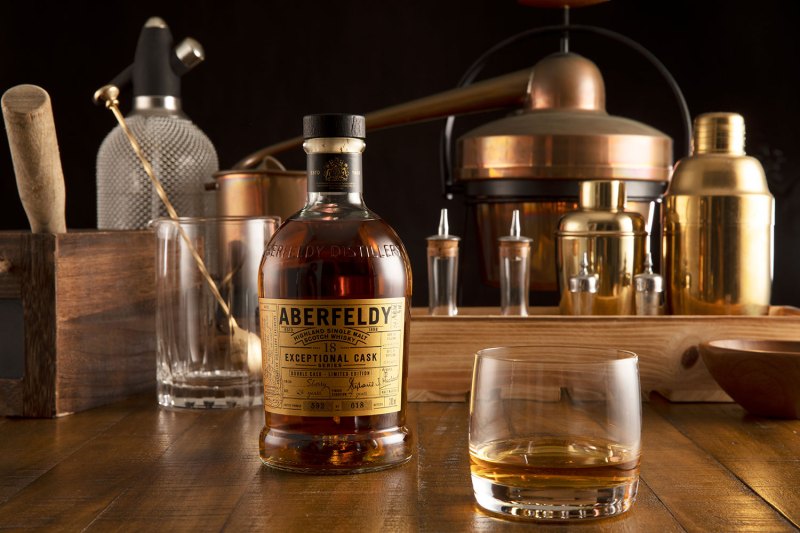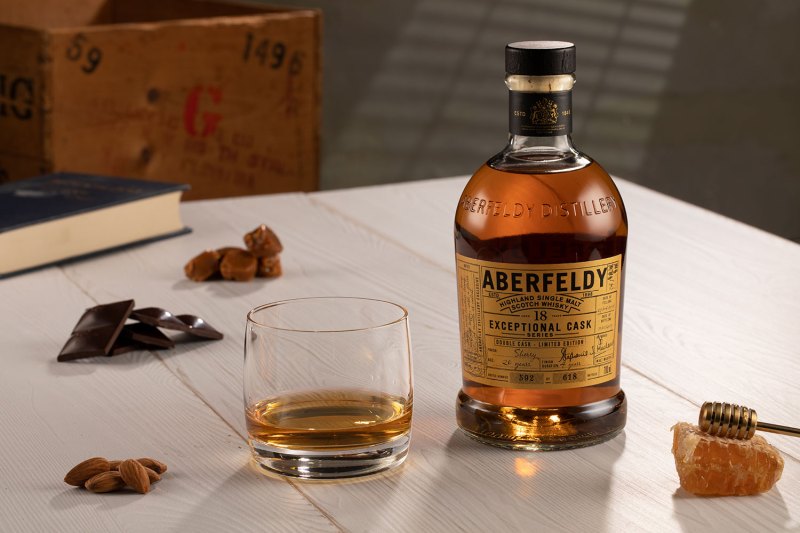This month, the Aberfeldy and Craigellachie distilleries are launching new expressions as part of their Exceptional Cask series. For many years, these whiskies were important components in the makeup of Dewar’s blended Scotch, but were not available on their own as single malts. That’s all changed, and these five new expressions are very different from the core range, showing how cask type, maturation, and quality of new make spirit affect the final product. Malt Master Stephanie Macleod selected the liquid for these releases herself, and she has successfully picked a broad range of flavors to showcase each lineup’s potential.

There are three Exceptional Cask expressions from Aberfeldy available. Aberfeldy 18 Double Cask ($200, 570 bottles) was aged in second and third-fill sherry casks for nine years, then put into first-fill sherry casks for another nine years. That long second maturation period is why it’s called Double Cask instead of being labeled as a finish. It’s bottled at 53.8%, and is rich, dark, and sweet. Aberfeldy 19 ($200, 270 bottles) spent nearly two decades inside first-fill Oloroso sherry casks. It’s a single cask release and is intensely flavored with fig and dried fruit notes, along with a bit of spice. Finally, Aberfeldy 24 ($300, 312 bottles) is a single cask release exclusive to New York. The liquid was matured in first-fill sherry casks as well, but has a bit of a lighter touch than the 19 even though it’s older.
There are two Exceptional Cask releases from Craigellachie. The first is the 19-year-old ($200, 402 bottles), a single cask release matured in second fill Oloroso sherry casks. It’s bottled at 55.2 percent ABV, but drinks cooler than you’d expect, with tropical fruit and vanilla notes. And Craigellachie 23 ($300) is a single cask release matured in first-fill sherry casks, with notes of cloves, cinnamon, and pineapple, according to the brand.

“Each expression in this series elevates a particular aspect of the liquid’s flavor profiling, adding character that one may not immediately recognize,” said Macleod in a prepared statement. “You can’t tell the quality of a cask just by looking at it. You have to open it up and sample it, and what a joy it is to discover an expression that goes on to be exceptional.”
The Exceptional Cask Series will be available across the country, with the exception of Aberfeldy 24 which is exclusive to New York.



